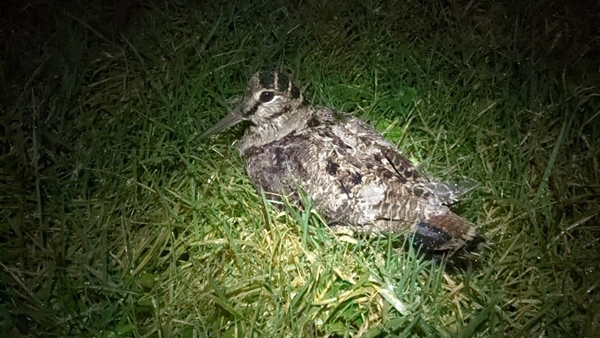3 Minute Read
Written by Dr. Christopher J. Heward, Acting Head of Wetlands

Bird-ringing still presents a very valuable tool for ornithologists, particularly for the study of survival and population dynamics. The GWCT’s Wetland research team runs two long-term woodcock ringing studies, one in Hampshire and one in Cornwall, where we ring a sample of woodcock each winter and record re-encounters with ringed individuals over subsequent years. These data can, with the aid of some complex statistical models, be used to estimate our capture rate and external recovery rates, and in turn calculate annual survival probability of ringed woodcock and their likelihood of returning to the study site each year. The act of marking a sample each winter also provides us with interesting information on the populations’ age ratios (i.e. first-year birds:‘adults’), and thus some measure of annual productivity.
In times gone by, ringing was primarily used as a means of studying the migratory movements of birds. While it has now largely been replaced by modern tracking technology in this area of research, it can still provide some interesting anecdotal insights here too.
Since starting my work with GWCT back in 2011, I have ringed or retrapped approximately 1,200 woodcock, but during that period have only ever caught ‘retrap’ woodcock ringed by myself or my colleague, Andrew Hoodless, who works on the same study sites. It has long been a personal ambition to remove a woodcock from the net and find an unfamiliar foreign ring – perhaps inscribed with a Finnish or Latvian address.
Back in February, during one of our two annual trips to our Cornish study sites, I made my first foreign recovery, although I didn’t immediately recognise it as such. It was only when I began to trace the origin of an unfamiliar ring number that I was reminded that Ireland operates on the same ringing scheme as the UK. It subsequently came to light that this woodcock had been ringed in County Cork by James O’Neill, a fellow woodcock researcher and PhD student at University College, Cork, who is co-supervised by GWCT’s own Dr Hoodless.
James had ringed the woodcock in December 2020 and, because it had been part of his PhD radio-tracking study, knew that it had remained in Ireland for the entirety of the 2020/21 winter. Finding this bird in Cornwall in early February was a little puzzling, especially as most of our satellite-tracking work (Woodcock Watch) has shown that the majority of woodcock are faithful to their wintering sites year on year.
It may be that this woodcock is one of the few that is less site-faithful, perhaps stopping short of Ireland this autumn while passing through equally suitable Cornwall. Alternatively, and I think more likely, the Irish-ringed woodcock had returned to Ireland for the winter of 2021/22, only to be caught by me on its return journey. This is early when compared to the mid-March departure dates recorded by the Woodcock Watch satellite-tags, but seems to make sense given the mild spring. As further proof, when I returned to Cornwall for a second week of woodcock catching in early March, I found numbers to be less than half of those observed in February, suggesting many birds had left early.